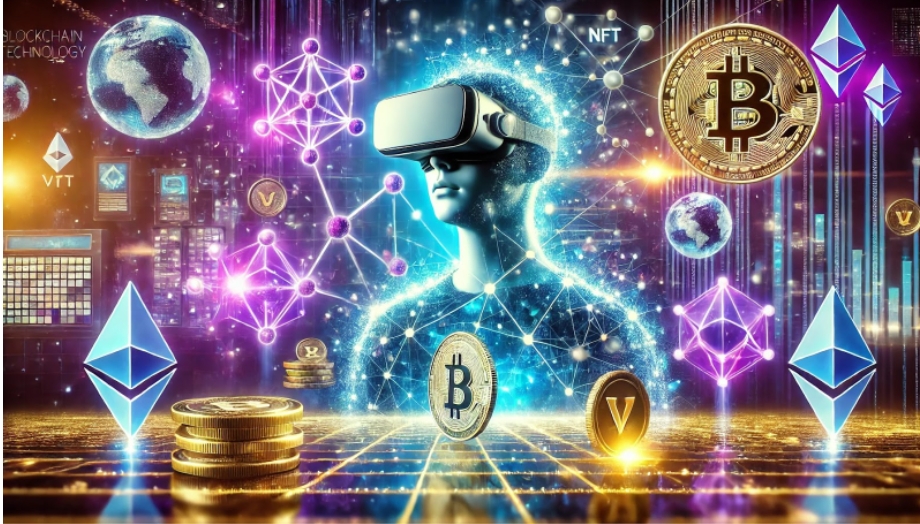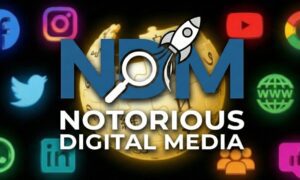The convergence of blockchain technology and virtual reality (VR) is revolutionizing how we experience digital environments. By merging the decentralized, secure, and transparent nature of blockchain with the immersive capabilities of VR, developers are creating digital experiences that are not only more engaging but also more secure and user-centric. This powerful combination is paving the way for a new era in gaming, virtual commerce, education, and beyond.
Blockchain Meets Virtual Reality: A Perfect Pairing
Virtual reality allows users to immerse themselves in digital spaces, offering interactive and sensory-rich experiences. However, VR’s potential is often limited by centralized systems, proprietary data controls, and a lack of interoperability. Blockchain steps in as the perfect complement by introducing:
- Decentralization: Blockchain removes central authorities, allowing VR ecosystems to be governed by their communities.
- Ownership of Assets: With blockchain, digital assets like VR avatars, virtual real estate, or in-game items can be tokenized as non-fungible tokens (NFTs), granting users true ownership.
- Interoperability: Blockchain can enable seamless transfer of digital assets and identities across different VR platforms, breaking down barriers between ecosystems.
These features empower users while fostering trust, security, and innovation in the VR space.
Real-World Applications of Blockchain in VR
The fusion of blockchain and VR is already being applied across various industries, showcasing its transformative potential:
1. Gaming
Gaming is at the forefront of blockchain-VR integration. Projects like Decentraland and The Sandbox allow players to own and monetize virtual land and in-game items as NFTs. Blockchain ensures the scarcity and authenticity of these assets, creating vibrant digital economies within VR worlds.
2. Virtual Commerce
The rise of virtual stores and marketplaces within VR environments is gaining traction. Blockchain enhances these spaces by enabling secure and transparent transactions through cryptocurrencies. Users can buy and sell goods or services within VR worlds, backed by trustless smart contracts.
3. Education and Training
In education, blockchain-powered VR platforms can issue verifiable credentials for training programs conducted in virtual environments. This ensures that certificates are tamper-proof and globally recognized, giving learners control over their academic achievements.
4. Social Experiences
Blockchain technology also improves social VR platforms by enabling decentralized governance. Users can vote on platform decisions, ensuring democratic control over content moderation, rules, and updates.
The Role of NFTs in VR
Non-fungible tokens (NFTs) are central to the blockchain-VR revolution. These unique digital assets allow users to:
- Own Virtual Goods: From VR wearables to artwork, NFTs ensure that users have full ownership of their digital possessions.
- Create Value: NFTs can be sold or traded in decentralized marketplaces, unlocking new revenue streams for creators.
- Build Identity: In VR, NFTs can represent avatars or digital identities, offering continuity across platforms.
With blockchain ensuring transparency and security, NFTs add depth and value to virtual reality experiences.
Challenges and Opportunities
While the integration of blockchain and VR holds immense promise, challenges remain. High energy consumption, scalability issues, and the need for better user education are significant hurdles. However, advancements in green blockchain solutions and user-friendly interfaces are addressing these concerns.
Opportunities abound for businesses and individuals to capitalize on this trend. From investing in blockchain-VR startups to participating in NFT-powered VR communities, the possibilities are endless. Staying updated with Blockchain News is crucial to navigating this rapidly evolving landscape.
Conclusion
The combination of blockchain and VR is transforming immersive digital experiences by making them more secure, transparent, and user-centric. From gaming and virtual commerce to education and social platforms, the integration of these technologies is reshaping the digital world as we know it.
As innovation continues to accelerate, the collaboration between blockchain and VR will unlock opportunities that were once unimaginable. To stay informed about the latest developments in this exciting space, make sure to follow trusted sources for Blockchain News and be part of the revolution.





























